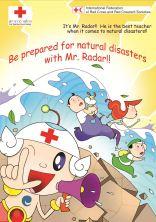Renata Barradas Gutierrez
renatabarradas88@gmail.com
Washington D.C, United States
Renata earned a Bachelor’s Degree in International Relations from Tecnologico de Monterrey and two Certificates in Woman, Gender and Development and International Relations from The University of British Columbia. While working as Communications Coordinator in Cinco Panes y Dos Peces A.C., a Mexican nonprofit organization, she helped indigenous communities in isolated regions in Mexico to apply a Risk Prevention, Control and Management Plan. Simultaneously, Renata taught a certificate in Financing Strategies and Fundraising for nonprofits. Previously, she coordinated two international volunteer projects in Belgium at the Red Cross Center for Asylum Seekers and at the Asylum Seekers and at the Arthur Regniers Center for motor and brain handicapped people. Renata has volunteered in ten projects nationally and internationally concerning a wide range of topics such as: orphan children, Down's syndrome children, reforestation, Elkhorn Coral Planting, fundraising, and reconstruction. Through these experiences, she developed project coordination and implementation, fundraising, web development and research skills. Renata enjoys topics related to philanthropy and has a strong passion for poverty relief and refugees. As a result, from her passion in the nonprofit sector, she has cofounded Amarte A.C., and Hoor A.C., two Mexican nonprofit organizations.
Renata currently helps to support the information and knowledge management needs of the Global Disaster Preparedness Center (GDPC). This includes providing immediate support for data collection and analysis, maintaining and refining an effective knowledge management system for a state-of-the-art resource center, and piloting of complementary knowledge management initiatives.
Guidance material

Gender and diversity-sensitive water, sanitation and hygiene promotion initiatives lead to more equitable, effective and efficient programming for all members of vulnerable communities. This guidance note provides an overview of gender and diversi...
Guidance material, Training material

The guideline focuses in the links between WASH and DRR in emergency response and early recovery. In this guideline the following WASH components are covered: Water supply Excreta disposal Hygene practice Vector control Solid waste management ...
Guidance material

It is always better to use water from a clean source that’s stored in a safe way. However, this is not always possible, especially in an emergency. Something may have made the source unclean or unusable. Or a population may not have access to c...
Awareness material

Description: This chapter discusses the importance of improving water, sanitation, vector control and hygiene in emergency settings. Learning objectives To explain the relationship between the environment and water, sanitation and hygiene relate...
Guidance material, Training material

The RAMP survey toolkit is specifically designed to be a management tool for Red Cross Red Crescent National Society health programme managers to achieve their management priorities. It is meant to be a comprehensive resource to empower National Soci...
Guidance material

This handbook presents some basic information on safe construction practices. Its purpose is to provide guidance on choices regarding settlement planning in risky environments, as well as on the building techniques to improve individual shelters. The...
Guidance material

Participatory Approach for Safe Shelter Awareness (PASSA) is a participatory method of disaster risk reduction (DRR) related to shelter safety. It is a variation of Participatory Hygiene and Sanitation Transformation (PHAST), which has been used by m...
Guidance material

This booklet is aimed to help humanitarian aid workers make more informed decisions on the use of plastic sheeting in emergencies. The target audience includes programme managers, field based engineers and technical staff, logisticians and others i...
Guidance material

This booklet explains how and when tents can be used, and how they can be adapted to suit the needs of peoplein emergencies (part A). The technical section of this booklet (part B) contains descriptions of tent types and tent parts. Part C contain...
